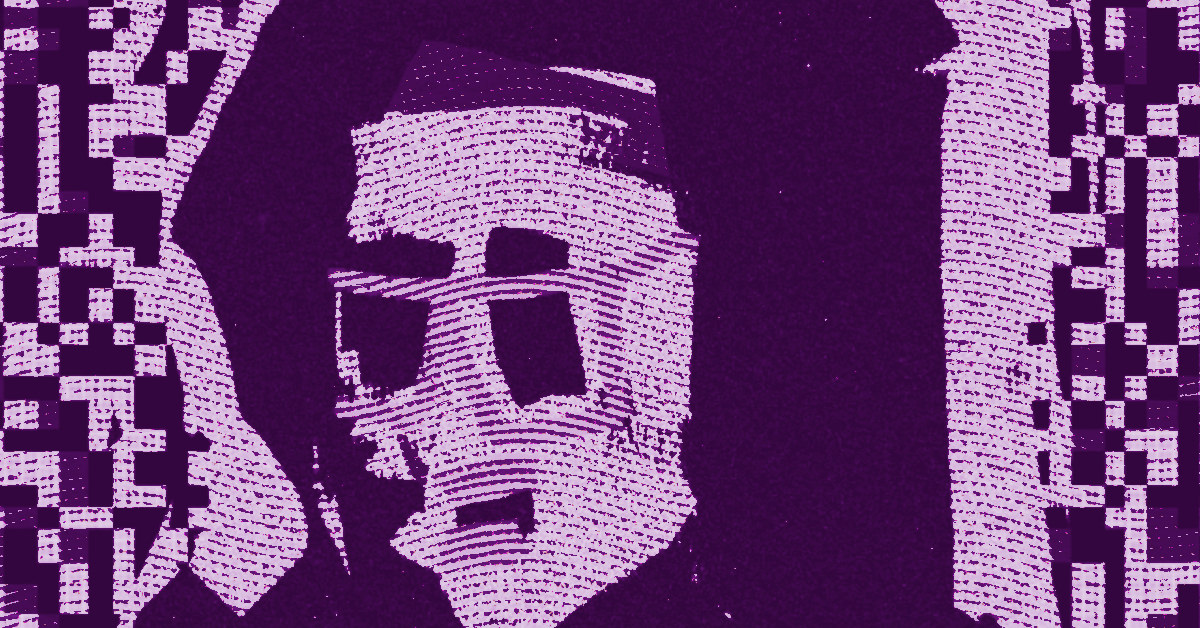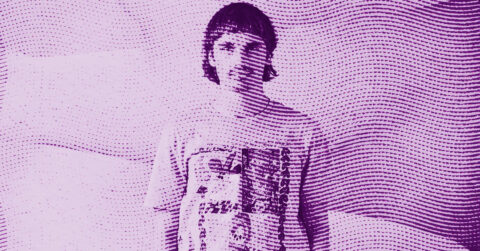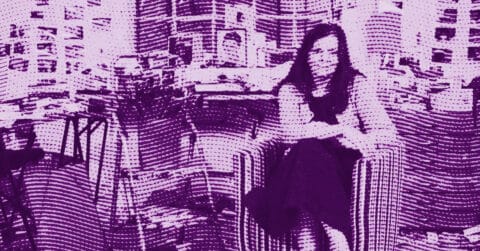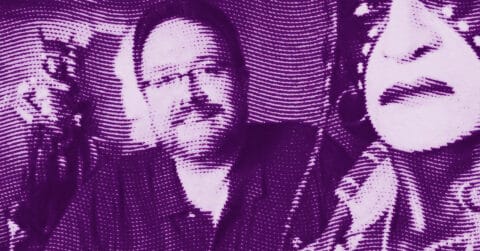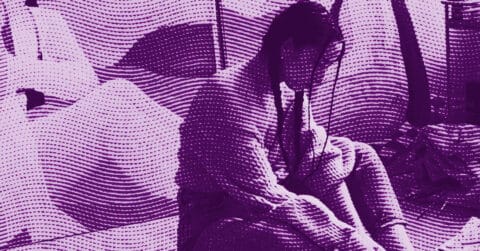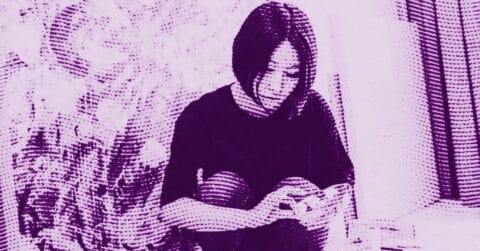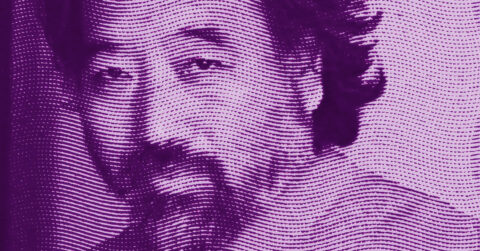Listen to me carefully, you bunch of snobs: contemporary art has found its prophet of the digital apocalypse, and they call themselves XCOPY. This anonymous London artist doesn’t just create artworks; they forge a visual language that captures the essence of our era with surgical precision. From their early steps on Tumblr in 2010 to record sales exceeding six million euros, XCOPY embodies that rare kind of artist who manages to combine technical innovation with conceptual depth.
In the pantheon of creators who have channeled the anxiety of their time, XCOPY stands out as an unflinching observer of our digital condition. Their distorted animations are not mere aesthetic experiments but constitute a true visual manifesto on the fragility of our technological systems. The artist wields the glitch as others wield the brush, transforming computer error into an artistic signature. This approach reveals an intuitive understanding of the mechanisms governing our hyperconnected society.
The architecture of digital memory
XCOPY’s work holds a particularly interesting dialogue with contemporary architectural theories, especially those developed by Dutch architect Rem Koolhaas in his essay “Junkspace” [1]. Koolhaas describes modern architecture as a space of perpetual consumption, devoid of hierarchy and constantly in flux. This vision resonates strikingly in XCOPY’s visual universe, where characters evolve in undefined spaces, suspended between existence and disappearance.
The artist constructs their compositions as temporal architectures, where each image forms a different floor of a perpetually rebuilding edifice. Their works such as “All Time High in the City” deploy this spatial logic where elements float in a blood-red space, evoking the non-places described by Koolhaas. Architecture in XCOPY’s work is no longer that of stone and concrete but of pixel and code. Their animations create spaces that exist only during their execution, ephemeral architectures that materialize and dissolve according to the computer’s cycles.
This architectural approach also manifests in their management of digital provenance. XCOPY has methodically built an archaeology of their own creations, preserving and documenting each stage of their artistic evolution from Tumblr to blockchain platforms. This process reveals an architectural conception of digital memory, where each work constitutes a layer in the overall edifice of their corpus. The artist thus becomes the architect of their own legacy, anticipating technical failures that might threaten the permanence of their creations.
The spatial dimension of their work is particularly revealed in their series “Loading New Conflict,” where the artist plays on computer loading times to create architectural tension. The waiting becomes space, the bug becomes ornament. XCOPY transforms the malfunctions of our interfaces into constituent elements of a new architectural grammar, that of the digital age. Their compositions organize visual chaos according to a structural logic reminiscent of deconstructivist principles, where apparent stability masks a fundamental instability.
This architecture of the unstable finds its most beautiful expression in their works in open editions such as “Max Pain,” where the artist sold 7,394 copies in ten minutes. This multiplication of the unique work questions the very notion of originality in digital art, creating a distributive architecture that redefines the relationships between uniqueness and reproducibility. The open edition becomes for XCOPY a conceptual tool that allows the structuring of new modalities of artistic dissemination.
The legacy of Dante: A digital divine comedy
XCOPY’s work draws deeply from the Western literary tradition, establishing a particularly rich dialogue with Dante Alighieri’s “Divine Comedy” [2]. This lineage is expressed not only in the recurring iconography of death and passage but also in the narrative structure of their corpus. Like Dante guiding the reader through the circles of Hell, XCOPY accompanies us in an exploration of the strata of contemporary digital society.
Dante’s influence is clearly manifested in works such as “A Coin for the Ferryman” and “All Time High in the City,” where the artist explicitly reprises the mythological figure of Charon, the ferryman of souls. In literary tradition, Charon symbolizes the transition between the world of the living and that of the dead, a function that XCOPY updates in the context of our era. Their skeletal characters in suits embody this symbolic death of the individual within the capitalist system, evoking the damned of the first circle of Dante’s Hell.
The tripartite structure of the “Divine Comedy” finds its echo in the chronological evolution of XCOPY’s work. Their early works on Tumblr constitute their personal “Hell,” exploring the dark territories of digital anxiety and contemporary alienation. Pieces like “Some Asshole” or “Right-click and Save As Guy” depict a world where humanity is trapped in the circles of digital consumption and financial speculation. This infernal period is characterized by a particularly brutal aesthetic, where characters seem condemned to eternally repeat the same futile gestures.
The intermediate phase of their work, corresponding to their early successes on NFT platforms, evokes the Dantean “Purgatory.” The artist explores here the possibilities of redemption offered by new blockchain technologies, while maintaining a critical distance from speculative euphoria. Works like “summer.jpg” bear witness to this in-between period, where technological optimism still mixes with a deep mistrust of market mechanisms.
XCOPY’s decision to place their entire oeuvre under a Creative Commons Zero license in 2022 marks their entry into a phase that could be called the digital “Paradise.” This release of their creations into the public domain constitutes a gesture of rare artistic generosity, recalling the beatific vision that concludes Dante’s journey. The artist thus achieves a form of creative transcendence, freeing their work from commercial constraints to allow it to circulate freely in the digital ecosystem.
This Dantean reading of XCOPY’s work reveals the literary depth of their artistic approach. Just as Dante used poetry to map the afterlife, XCOPY uses digital animation to map the unexplored territories of our technological condition. Their hypnotic visual loops evoke the cyclical punishments of Dante’s Hell, where each sin finds its punishment in the eternal repetition of the transgressive act.
The anonymity claimed by XCOPY reinforces this connection with Dante, who presented himself as a mere witness guided by Virgil in his exploration of the afterlife. The contemporary artist assumes the role of chronicler of our time, documenting without complacency the pathologies of digital society. Their recurring characters, notably the figure of the skeleton in a suit, function as modern allegories, embodying the vices and virtues of our era.
The poetics of error
At the heart of XCOPY’s aesthetic lies a philosophy of error that goes beyond mere formal experimentation. Their distortions, or “glitches” in English, are not accidents but deliberate choices that reveal the flaws in our systems of representation. This approach is part of a long artistic tradition of subverting established codes but finds unprecedented expressive possibilities in the digital medium.
The artist develops a visual vocabulary where dysfunction becomes ornament, where the instability of the image reveals the instability of our era. Their animations pulse to the heartbeat of contemporary anxiety, translating into visual language the tensions that cross our hyperconnected society. This aesthetic of saturation and trembling captures something essential about our compulsive relationship with screens and information flows.
The remarkable coherence of their artistic approach over more than a decade demonstrates a mature and assumed vision. XCOPY has never yielded to passing fashions nor market pressures, preserving their visual signature intact even when their works reached valuation peaks. This artistic integrity is one of the keys to their lasting success in a sector renowned for volatility.
XCOPY’s experimental approach to broadcasting platforms reveals an instinctive understanding of the stakes of digital art. Since 2018, the artist has been simultaneously testing several blockchain protocols, anticipating the technical evolutions of the sector. This diversification strategy has enabled them to survive the successive disappearances of platforms like Ascribe or RARE Art Labs, thereby preserving the integrity of their corpus.
Their recent exploration of the Shape blockchain with the “Cope Salada” series illustrates this constant capacity to adapt to technological innovations. XCOPY does not merely undergo technical evolutions; they anticipate and integrate them into their creative approach. This technological agility is one of the key factors of their artistic longevity in an ever-changing environment.
The artist has also revolutionized the distribution modes of digital art with their open editions, notably “Max Pain,” which generated twenty-three million euros in ten minutes. This experiment demonstrated the possibility of reconciling democratic accessibility and artistic valorization, opening new perspectives for the diffusion of contemporary art.
Anonymity as an artistic strategy
XCOPY’s choice of anonymity is much more than a mere artist’s whim. This strategy focuses attention on the work itself, freed from biographical contingencies that often interfere with artistic reception. The absence of a public identity transforms each creation into a puzzle, reinforcing the viewer’s engagement in interpretation.
This approach is part of the tradition of anonymous artistic collectives, from Guerrilla Girls to Banksy, who use ego erasure as a tool to radicalize the artistic message. XCOPY takes this logic to its conclusion by turning their anonymity into a true artistic brand, creating a fascinating paradox between maximum visibility and total invisibility.
The economic innovations introduced by XCOPY in the artistic sector go far beyond mere speculation on NFTs. Their decision to place their entire work under a Creative Commons Zero license is a major artistic gesture that questions the very foundations of intellectual property in art.
This voluntary liberation of their copyrights opens up unprecedented prospects for the circulation and reappropriation of contemporary art. XCOPY thus anticipates the emergence of a more collaborative artistic ecosystem, where creation becomes collective and value shifts from ownership to usage.
The economic impact of this decision remains to be assessed, but it reflects a prophetic vision of the future evolutions of the art market. The artist prioritizes cultural diffusion over immediate profitability, adopting a stance that recalls historical avant-gardes in their desire to transform society through art.
Towards an aesthetics of resistance
XCOPY’s work outlines the contours of an aesthetics of resistance adapted to the challenges of our time. Their creations function like beneficial viruses that positively infect the digital space, offering visual alternatives to the uniformity of contemporary interfaces.
This subversive dimension is particularly evident in works like “Right-click and Save As Guy”, which ironically subvert the criticisms made against digital art, criticisms that, I admit, I myself long shared. The artist transforms attacks into creative material, demonstrating art’s capacity to metabolize oppositions to bring forth new forms of expression.
XCOPY’s artistic legacy is already measured by the influence they exert on the new generation of digital artists. Creators like Alpha Centauri Kid or OSF openly claim this heritage, extending and reinterpreting the visual vocabulary inaugurated by the London master.
XCOPY’s art stands as an essential testimony to our era, documenting with remarkable acuity the profound mutations affecting our relationship to reality. Their works will outlive market fluctuations as they carry a truth about our contemporary condition. By releasing their creations into the public domain, the artist ensures their longevity far beyond current economic contingencies.
This art of the eternal instant, the sublimated glitch, and the tamed anxiety places XCOPY at the forefront of creators who marked the beginning of the 21st century. Their work constitutes a ruthless but necessary mirror of our digital obsessions, simultaneously offering diagnosis and therapy. Within the apparent chaos of their distorted animations, a secret geometry emerges that reveals the hidden order of our contemporary disorder.
- Rem Koolhaas, “Junkspace”, in Content, Taschen, 2004
- Dante Alighieri, La Divine Comédie, translated by Jacqueline Risset, Flammarion, 1992

